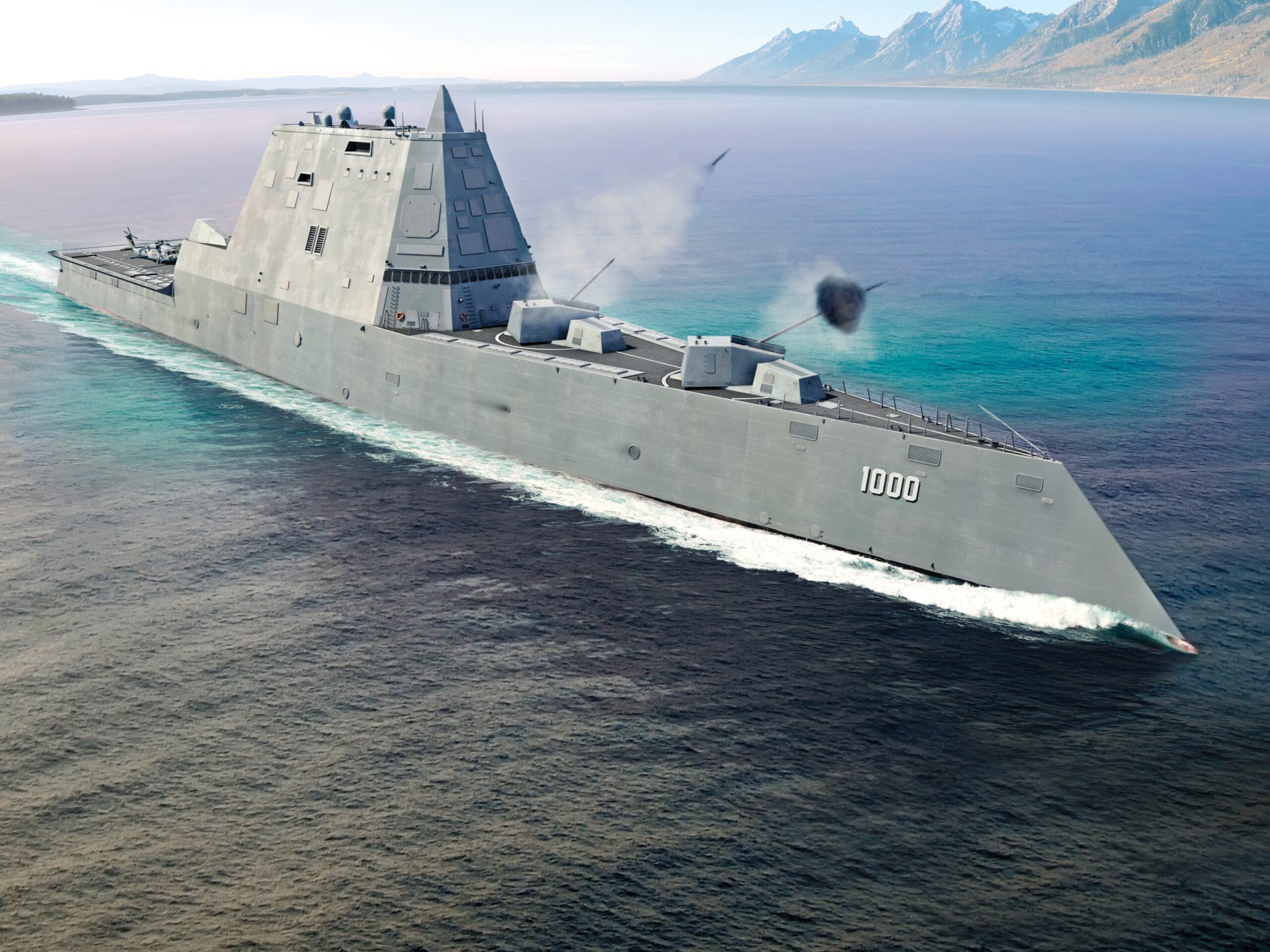

While the great powers have not fought a battle at sea since 1945, the tide could be turning. The United States’ strategic pivot to Asia and the Pacific, announced in 2011, means military planners are rethinking our naval capabilities. Meanwhile, China’s newfound financial, industrial, and political might has prompted its leaders to develop an open-water navy of its own. During each of the past three years, China’s shipyards have produced more warships than any other nation’s. They are on pace to do it again this year and next.

Of the U.S. projects underway, the most anticipated is the DDG 1000 USS Zumwalt. The guided-missile destroyer is built with few right angles—a stealth design that gives it the radar profile of a fishing boat. Belowdecks, it is rumored to have the sonar signature of a submarine. The Navy christened the first of three Zumwalt-class ships on order in 2014. Also in development: the Littoral Combat Ship, a high-speed vessel made for close combat, mine sweeping, and submarine hunting. The Navy already has a few built, with dozens more on order.
In China, a new cruiser design, the Type 055, has been stealing headlines. Defense experts say its armament—modern radar, 130 mm guns, and capacity for up to 128 missiles—could match or exceed thatof any current U.S. or allied warship. Also in the works is the Type 095, an advanced nuclear attack submarine due to enter service in 2019, and the CV-18,China’s first domestically produced supercarrier, which will be equipped with stealth jets, helicopters, and drones.
Both the U.S. and China are also working on a new wave of ships that are drones themselves. With patience and persistence, these unmanned ships could one day rule the seas.
Stealthy, Semi-Autonomous Warships
Illustrated above, the Zumwalt‘s stealth design makes it 50 times harder for radar to spot than a standard destroyer.
Four gas turbines generate 78 megawatts of power making Zumwalt-class destroyers the only warships able to mount an electromagnetic rail gun.
Because it’s heavily automated, the Zumwalt requires a crew of only 158. A WWII ship of the same size and role needed a crew of 1,196.
Electromagnetic Rail Guns
For 800 years, guns used the chemistry of gunpowder to shoot. No more. The electromagnetic rail gun, being tested at the U.S. Naval Sea Systems Command at Dahlgren, Virginia, represents a break point in this history.

Advantages
The gun has a range of 100 miles and shells travel more than twice the speed of a bullet, so they aren’t likely to be shot down. Each shell is expected to cost around $25,000, compared with $1.5 million for a cruise missile. And a rail-gun-armed ship could carry a thousand of them, as opposed to a hundred or so missiles.
Disadvantages
It requires tremendous power. Until the Zumwalt comes on line, no current warship can generate the 25 megawatts needed to fire this weapon.
How It Works
A 4-million-amp current runs through oppositely charged rails on either side of the barrel. A shell, which weighs about 35 pounds, is placed onto a conductive seating.
When positioned between the two rails, the seating completes the circuit. At that point, a burst of power, called a Lorentz force, hurls the projectile out of the open end of the barrel.
The projectile goes from zero to 5,000 miles per hour in 1/100 of a second. It can strike with 32 megajoules of energy, roughly equal to the force of a locomotive smashing into a wall.
This article was originally published in the July 2015 issue of Popular Science, as part of our Future Of War feature. Check out the rest of the feature here.
